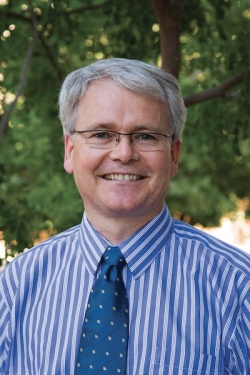Christopher Boone
Arizona State University, USA
In sweeping images of cityscapes, it is nearly impossible to distinguish individual human beings. We clearly see the products of human actions and decisions – buildings, roadways, streetlights, parks and open space – but it is difficult if not impossible to discern people on the ground, going about their daily lives. The three papers in this series ask us to zoom in and think seriously about the human experience in cities. Putting the needs of people at the center and in full focus is fundamental for advancing urban sustainability.
Paul Coseo makes the point that the urban heat island (UHI), a well-documented phenomenon in densely built-up urban areas, remains poorly understood at the human scale, which hampers the ability of urban designers to effectively alleviate experienced higher temperatures. Cool infrastructure strategies are too coarse in scale and may bring few if any benefits to residents. Some of his own research shows that commonly accepted ways of reducing UHI – including porous paving and vegetated alleyways – showed no significant difference from regular alleys with standard asphalt laving. It is important to get these strategies right, especially in low-income communities where resources are limited and vulnerability to heat is acute. If new urban design strategies that use cool infrastructure do not meet intended goals, future public support for alternative strategies could be undermined, especially in municipalities with stressed budgets.
Access to information is one way to reduce risks in urban environments. Research on social vulnerability has demonstrated repeatedly that information is a critical asset for lessening harm from acute hazards – such as high heat warnings – or from chronic conditions like long term exposure to pollutants (Polsky et al., 2007; Eakin and Luers, 2006). Mossberger and Tolbert use newly acquired data on internet use to show that the digital divide persists in the United States along expected race, ethnicity, and income lines. Although adoption of broadband in homes is leveling off, more than a quarter of households are still without it. The authors make the important point that if municipalities employ “smart cities” strategies as part of their sustainability plans, it risks leaving behind portions of the population that may need the information most. Low-income and minority households, already vulnerable to environmental hazards (Schlosberg, 2007), may be placed in even more vulnerable positions if they do not have adequate access to digital information. Similarly, they may not be able to take full advantage of sustainability programs that rely on digital delivery, such as real time public transportation information. The lived experience of people, especially the most vulnerable, should therefore be a central principle of smart cities strategies.
Aggarwal takes us to the slums of Delhi to make her point that alternative strategies are necessary to achieve human well being (a foundational principle of sustainability), especially for the most marginalized. She begins with the story of a boy who understands, even at a young age, that the law can improve lives when other formal systems of government fail. Rather than becoming a movie star or a doctor, the boy tells Aggarwal that he wants to become a lawyer and perhaps even a Supreme Court judge because the law can help improve living conditions for him and his family. What Dr. Aggarwal is referring to are legal innovations, in particular Public Interest Litigation, that have been increasingly employed in India to achieve social and environmental justice. This is an interesting turn given that in the United States, the courts have often been generally ineffective for those seeking environmental justice, forcing groups to use social justice methods to achieve their goals. The lesson here is that meeting the social and environmental justice principles of sustainability will require a flexible and culturally relevant set of approaches.
Whether the goal is to improve the lives of children living in slums in Delhi, reducing vulnerability to extreme heat in Chicago, or reducing inequities in access to information in the United States, the drive to do so should start with the needs of real people, the spaces they occupy, and their lived experience. Each of these papers argue in their own way that people should be the most visible and highest priorities if we are to achieve the grand challenge of transition to a sustainable, urban planet.

Dr. Christopher Boone is Dean of the School of Sustainability at Arizona State University. He is also a member of the Urbanization and Global Environmental Change Project’s Scientific Steering Commitee
Website
Mail
Header Image: Phoenix city lights at dusk. Credit: Gill Couto / shutterstock.com
